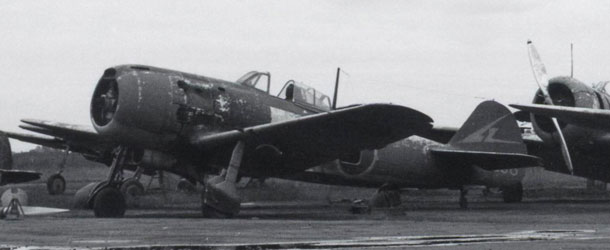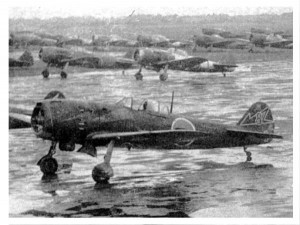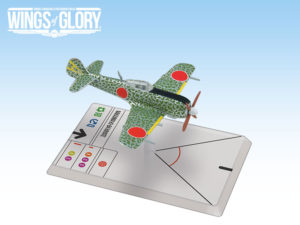The last article presented the Nakajima Ki-84 “Hayate”. Now it’s time to learn something about the three versions of this fighter featured in the WW2 Wings of Glory Airplane Packs. Two are fighters flown by the pilots Kenji Fujimoto and Takeshi Imoto and the third miniature represents an aircraft which served in the 52nd Sentai.
Kenji Fujimoto and Takeshi Imoto
In late 1944, when United States strategic bombing by B-29s started to hit the urban areas and bring the war home to Japan, Japanese defense adopted ramming as a tactic.
Kenji Fujimoto was one of the first surviving ramming pilots to receive the Bukosho, a military decoration of the Empire of Japan, established on 7 December 1944. It was awarded by the Imperial Japanese Army (IJA) to living soldiers who performed with exceptional valor in battle – as was the case for many fighter pilots defending Japan against enemy bombers.
Serving the 246th Sentai, based in Taisho airfield, Kenji Fujimoto is credited with three B-29s destroyed. The information about the pilots who fought to defend Japan in this period are scant, but Fujimoto is mentioned for his survival after ramming two of these big bombers on different occasions - March 13th and 14th, 1945. He died five months later, on last day of the conflict, when his Ki-84 was shot down by a P-47.
Takeshi Imoto was a pilot assigned to the 182th Shimbu-Tai, one of the Imperial Japanese Navy Special Attacks Units used for very risky, or suicidal, missions. The unit was based in Tatebayashi airfield in August 1945.
52nd Sentai
The 52th Sentai was an unit equipped entirely with the Ki-84 Hayate. Formed in April 1944 and based in Ashiya airfield, the first months were spent mostly for training the fresh and inexperienced pilots, and in local air defense duties. But on August 20th, the unit claimed a bomber shot down in an action with 15 planes. In late September, the 52nd Sentai departed to the Philippines with 40 aircraft.
On October 15, the unit took-off to intercept a US carrier aircraft attacking the Manila area, claiming 8 enemy aircraft shot down. Later, on the same day, the whole 16th Hikodan took-off to escort the IJN flying East, 500km over the sea. This was unusual and extremely dangerous for IJAAF planes and pilots. Together with the 51st Sentai, the 52nd claimed 15 planes shot down with the loss of seven of their own. In the following days, these missions continued and, despite the enemies downed, losses were high. The unit had only eight aircraft remaining on October 23rd. By November 5, 1944, the unit was left with no aircraft.
In December the unit was reorganized with new pilots and aircraft, and assigned to the air defense of Tokyo. On February 16 and 17, US carrier aircraft attacked the Kanto area and the unit managed to shoot down more than ten aircraft. On May 19th, more than 30 Hayate from the 52nd took off from Shimodate. They didn’t spot any enemy planes and tried to land at Akeno. Due to various mishaps, only one of the 30 managed to land. The very high rate of accidents showed the Hayate’s poor condition at that stage of the War. The final base of the unit was Chofu airfield from July 1945 until the end of the War. Its last flight was on August 24th.
Information sources: Aces of WW2, B-29 Hunters of the JAAF (Osprey Publishing, Koji Takai and Henry Sakaida), Japanese Army Fighter Aces, 1931-45 (Stackpole Books, Ikuhiko Hata,Yasuho Izawa and Christopher Shores), Arawasi, Pacific Wrecks.












